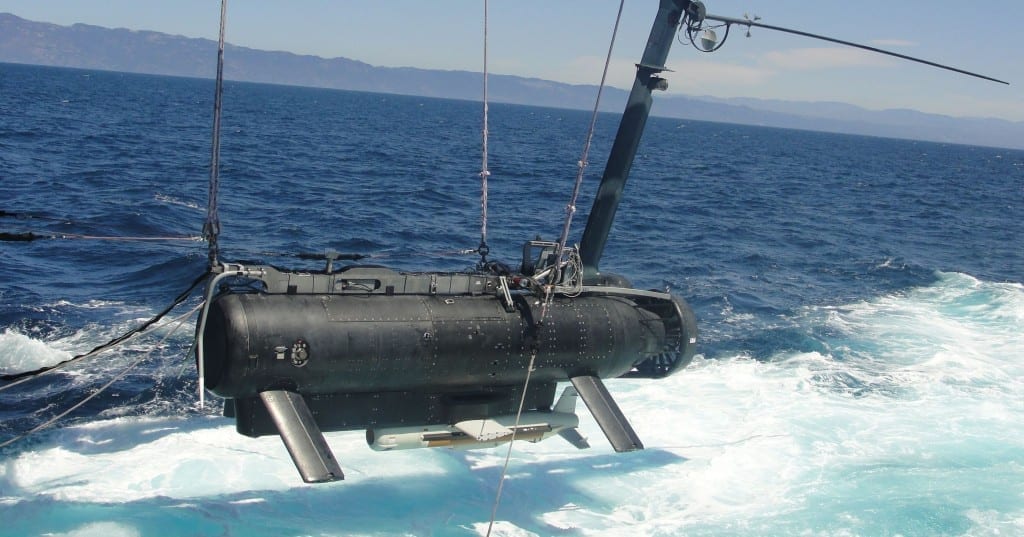An unmanned minehunting vehicle developed by Lockheed Martin showed improved reliability in tests, moving it a step closer to use on U.S. warships. This information came right from a Navy spokesperson.
An improved version of the Remote Minehunting System went through 850 hours of testing, clearing the road for 10 weeks of development and operational testing (done in 2014) which should will go into use this year (2015).
Steve Lose, who’s a Navy program manager for Lockheed Martin, mentioned that the “system is going to take sailors out of the minefield” in the future.
It has always been a serious mission for the Navy to hunt for mines in murky waters. It is smart to use unmanned systems and keep sailors out of harm’s way. Sea mines, unfortunately, are weapons that are easily available to terrorists due its low cost.

Lockheed Used Innerspace’s 4500 Thruster
Lockheed’s Remote Minehunting System combines a diesel-powered, stealthy unmanned vehicle, or Remote Multi-Mission Vehicle (RMMV), with advanced sonar sensors to help Navy ships search for mines more efficiently and faster.
The RMMV sends real-time visual images back to the ship and allows them to be collected for future analysis. And, it uses Innerspace’s innovative 4500 thruster.
Steve Lose also mentioned the testing completed last week showed the equipment operated successfully, on average, for 115 hours before breaking down, up from 45 hours previously and far exceeding the Navy’s 75-hour requirement.
Lockheed and Australia’s Austal are building two different models of the new warships, which are designed to help patrol coastal areas, find mines and chase down potential attackers.
Completion of the extensive at-sea testing of the system, coupled with a recent contract for its integration onto the new LCS warships, is good news for Lockheed, which is also one of two companies building the new warships.
Lose said that if all goes well, Lockheed stands to receive orders for 44 more RMMVs in coming years. Lockheed said it would work closely with the Navy to get the new equipment on board the ships as quickly as possible.
“With the completion of the reliability testing, we are a big step closer to addressing the need for a safe, efficient mine warfare capability for the U.S. Navy,” Steve Froelich, program director at Lockheed’s mission systems unit.
To see the original article on Reuters, click here.
